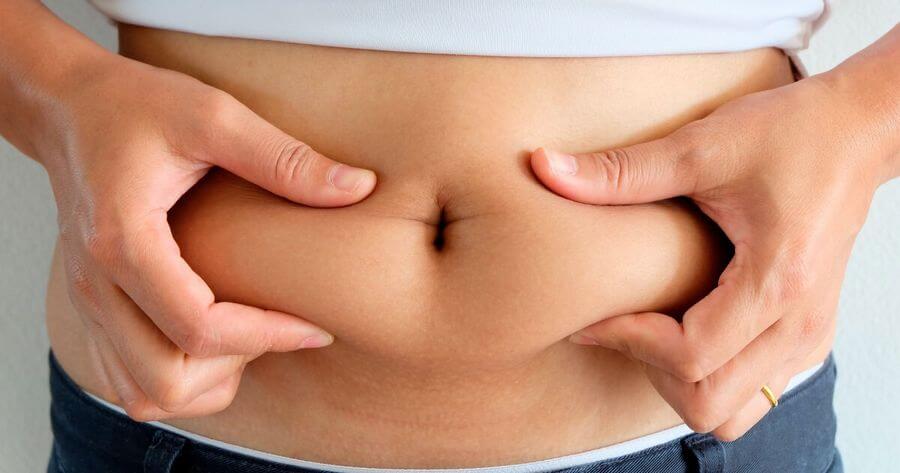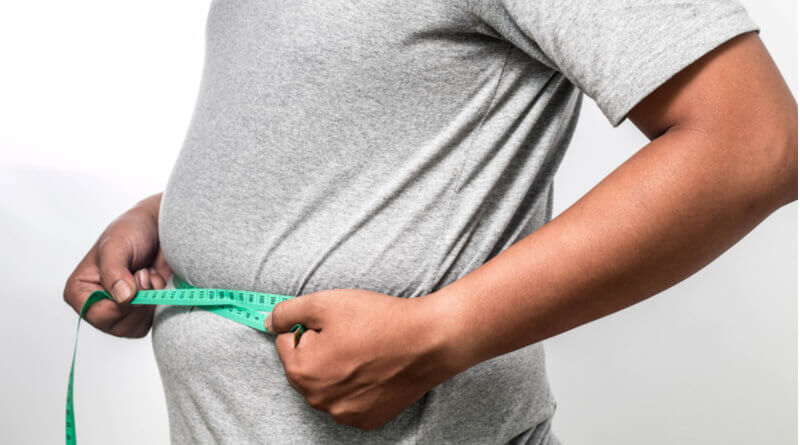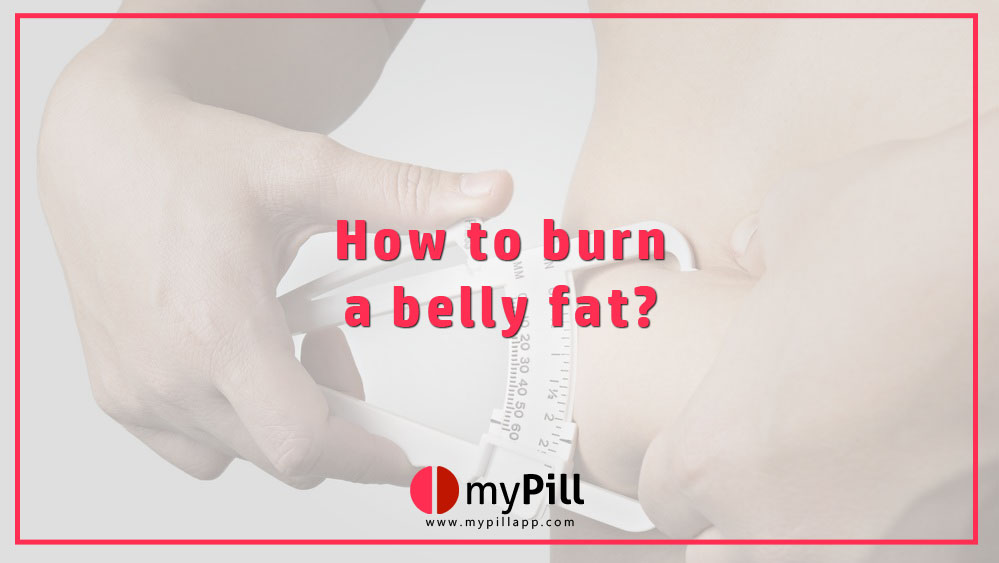(Last Updated on July 8, 2024)
Your protruding belly does not only prevent you from zipping up your trousers, but it could heighten the risk of developing severe health issues, including type 2 diabetes, heart diseases, dementia, stroke, and breast cancer in women.
The body contains two types of body fat: subcutaneous and visceral fat.
Subcutaneous fat lies under the skin and feels soft on touch, while visceral fat surrounds the vital organs such as the liver, intestines, kidney, and stomach; it is found deep in the abdominal section.
Visceral fat is the main culprit to your growing midsection.
Often, with increasing age, body fat increases, especially around the midsection.
Belly fat contains beta fat cells that are hard to eliminate. It shares space with vital organs and is metabolically active.
Thus it obstructs hormones that regulate appetite, mood, cognitive function, and weight resulting in various diseases.
Before we discuss how to lose belly fat, let’s dig deeper into the causes.
Read next: 3 Best Fat Burning Supplements You Can Buy
Why Is Your Belly Protruding?

Weight watchers will tell you that your belly flab is due to lack of physical activity and consuming too many calories.
However, the causes of belly fat go deeper than this.
Your cortisol levels are on a hike
If you are dealing with long term stress, your hunger has probably gone up, thanks to high levels of cortisol-the stress hormone.
Increased cortisol accelerates the release of insulin, which lowers your blood sugar; hence, the body craves for fatty and sugary foods.
This throws your appetite off balance, leading to more calorie intake.
Sadly, cortisol triggers the production of myostatin, a protein that wears off muscle.
Poor gut community
Research shows having the wrong gut bacteria, such as Firmicutes, which is particularly high in obese individuals, may facilitate the absorption of many calories in the body.
Most gut bacteria enhance digestion, control hormones and appetite, manage the immune system, and regulate mood.
Thus having a reduced balance in gut bacteria may directly increase belly fat.
It’s a beer belly!
Taking too much alcohol will give you excess fat in your belly.
Alcohol increases your calorie intake; beer contains high calories similar to a soft drink.
Also, it increases appetite causing you to overeat.
Moreover, alcohol has been seen to prevent fat burning; the body concentrates on breaking down alcohol for energy over other sources of energy such as stored fat. Thus, it enhances body fat.
You are on a Trans Fat diet
Trans fat facilitates the transfer of fat from other body parts to your belly.
If you snack on fried foods, biscuits, fast foods, cakes, pies, and ice cream, trans fats are the main culprit to your protruding belly.
Research shows that individuals who consume a trans fat diet are more likely to have belly fat than those on monounsaturated fat intake.
Proven Tips To Lose Belly Fat

Belly fat can be a big nuisance in your weight loss journey.
It is challenging to lose fat in the midsection, but not impossible.
Various proven ways target fat, specifically in your belly.
Have a look!
1. Limit your intake of refined sugar
Too much refined sugar is detrimental to your body.
Sugar contains fructose, which is turned into fat when in excess.
Studies1 show a strong correlation between high amounts of fructose and increased belly fat.
Additionally, it also increases liver fat resulting in insulin resistance that leads to type 2 diabetes and other metabolic issues.
Diet sodas are mainly very harmful to your health; they are enriched with artificial sweeteners that tell the body to hold on to fat; this increases insulin levels promoting the body to store fat.
Reduce your intake of sugar-sweetened drinks such as sugary sodas, fruit juices, sports drinks, flavored waters, alcoholic mixers and sugary foods such as cakes, chocolate, and candy.
Note: Fruit juice is high in sugar, just like soda. Taking too much fruit juice may result in belly fat gain. If you are targeting to lose belly fat, replace fruit juice and other sweetened drinks with water.
2. Watch your diet
Watching and tracking what you eat is crucial in losing belly fat.
Increase proteins
Proteins are effective in losing weight.
Studies2 show proteins accelerate the body’s metabolic rate by 80 percent and lower appetite by 60 percent.
Proteins not only help to shed fat, but they also prevent regaining weight later.
Additionally, research shows that proteins are linked to a low risk of accumulating belly fat.
Increase protein foods in your diet, including seafood, dairy products, whole eggs, seafood, legumes, fish and nuts.
Lower carbs intake
Some studies show that a low-carb diet is more effective in reducing belly fat and fat around the liver and other internal organs.
Low carbs lower your appetite and put you into ketosis, forcing the body to burn fat for energy.
Ensure to limit refined carbs like pasta, white bread, white rice, candy, and replace them with complex carbs, which are high in fiber such as sweet potatoes, whole grains, brown rice, oats, and beans.
Limit your carb intake by almost 50grams a day to see noticeable results.
Snack on vegetable salads, fruits, and nuts
Snack on healthy controlled foods such as nuts, fruits, and veggies.
Research shows that munching at least 42 grams of almond daily instead of a high carb diet lowered belly fat and reduced cholesterol levels.
Almonds are high in fiber, which leaves you feeling fuller for longer and controls the number of calories you take in a day.
Substitute your morning coffee with green tea
Green tea is a healthy drink known to support weight loss, especially around the waistline.
It contains catechins such as epigallocatechin gallate (EGCG) that boost metabolism, which promotes fat burn for body fuel.
A 2009 study3 shows EGCG combats belly fat, especially when combined with exercises. Catechins in green tea promote visceral fat loss.
Eat foods that promote belly fat
Include the following foods that target belly fat: eggs, olive oil, avocados, coconut oil, dark leafy greens, berries, nuts, beans, peppers, greek yoghurt, and salmon.
3. Track your food intake
What you eat is very important in weight loss, but knowing the quantity you take is even more crucial.
Most people think that eating high protein, healthy fats, and low carbs will torch their belly fat.
However, it is how you take them that matters; people either overeat or under eat these foods.
That said, it is essential to track the calories you need to consume in a day and the portion sizes of each meal.
For instance, you can use an online calorie calculator to know the calories you need to eat in a day.
Practice mindful eating; eat three-course meals in a day and avoid snacking between meals.
Control food portions by reading nutritional facts label and use a measuring cup to get the right portions.
For a long time, dieters recommended many small meals throughout the day to accelerate metabolism. However, a new study4 has revealed that snacking could largely contribute to belly fat.
Thus researchers support taking three balanced portion-controlled meals in a day: breakfast, lunch, and dinner.
4. Exercise
Weight loss experts recommend HIIT (High-Intensity Interval Training) workouts to burn fat.
But researchers from the University of Sidney found out that HIIT exercises may actually increase your abdominal fat.
This 2014 study5 showed that overweight and inactive individuals who engaged in HIIT, 24 minutes daily for 3 days a week, had 0.7 percent increased abdominal fat by 12 weeks.
While a placebo group who performed traditional aerobic exercises (exercise bike for 45 minutes, three days a week) lost 2.7 percent abdominal fat by 12 weeks
Thus, traditional aerobic exercises will target belly fat more; HIIT exercises are effective in maintaining fitness among lean and young people.
Combine cardio and strength training exercises moderately and regularly. Here are some aerobic exercises:
- Walking Or Running
- Cycling
- Exercise Ball Crunch
- Swimming
- Reverse Crunch
- Jumping Rope
- Deadlifts
- Lunges
- Captains Chair Leg Raise
- Jogging
- Kettlebell swings
- Squats
- Chest and shoulder presses
Studies6 show that combining strength training and aerobic exercises target visceral fat in overweight individuals.
5. Manage Stress
When you get stressed, the body increases the release of cortisol, a hormone that helps the body to respond to stressful events.
Regrettably, it causes weight gain, particularly in the abdominal area, according to research7.
Try to lessen up through meditation, yoga, deep breathing, and walking sessions.
6. Get plenty of sleep
Our busy lifestyles may limit the quality of sleep we get.
Sadly, lack of enough sleep results in the accumulation of abdominal fat.
Studies8 show that women who sleep less than 5 hours a night are likely to gain belly fat compared to women who sleep seven or more hours every night.
Ensure to sleep 7 to 9 hours every night; get a sleep schedule: sleep and wake up at the same time each day.
Conclusion

Losing belly fat will not happen overnight; it requires efforts in changing your lifestyle behaviors and adopting the above tips.
Basically, have a diet check and write down everything you need to eat and the number of calories you should be consuming each day.
Also, have a regular workout plan, sleep well, cut out refined sugar and avoid stress.
Weigh yourself each week to see progress.
Finally, go easy on yourself; losing belly fat is a process.

